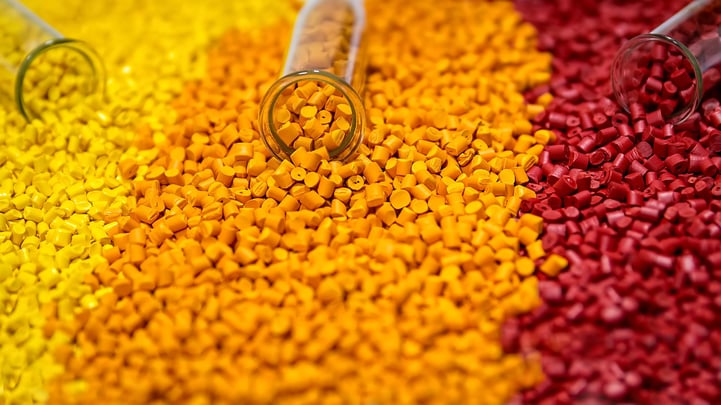
As an engineer, your focus is on taking a product idea and figuring out how to get it manufactured so it fits all your specifications and stays within your budget. But before you select an injection molding partner, it’s a good idea to brush up on what the injection molding process looks like.
The process outlined below lists the two most critical phases of the injection molding process; you’ll also find a list of things to consider before you partner with an injection molding company.
Injection Molding Process Steps
The process has come a long way since 1872, when the first injection molding machine was created by American inventor John Wesley Hyatt. Hyatt’s machine was very simple—it used a plunger to push plastic material into a mold.
The plunger was replaced in 1946 by James Watson Hendry, who added an auger in the injection barrel. While machines are now run with far more advanced machining, this same basic mechanism is used in the injection molding process today.
Step 1: Create your injection mold.
Before you can begin the injection molding process, you must have a mold with the shape of the part you want inside it. The injection mold is most typically made of steel (though some parts may require another material) and is created with very narrow part tolerances, +/- .0005 of an inch (to put it in perspective, a human hair is about +/- .0003”). This requirement keeps the liquid plastic from seeping into crevices, which helps avoid potential quality or visual issues with the completed plastic part.
If you are creating a high volume of plastic parts, you may require multiple cavities inside a mold, so every cycle creates many plastic parts. Here at Micron, we have the capability of creating a mold with up to 96 cavities—which can create millions of parts every day.
Step 2: Manufacture your plastic product.
- The completed mold is placed in the injection molding machine.
- The plastic pellets are heated until they are liquid.
- The liquid plastic goes through a dryer, if necessary (as moisture in the plastic might cause splay or hydrolysis in the finished product).
- The liquid plastic is conveyed into the injection molding machine through a vacuum.
- The liquid plastic goes through a heated injection barrel, which is attached to a feed throat.
- The liquid plastic is injected under pressure through the feed throat into a mold.
- The mold—which is cooler than the liquid plastic—causes the plastic material to cool to a solid state, which forms the plastic part.
- The mold opens and the cooled plastic part is ejected from the mold either by hand (in a vertical injection molding machine) or by force of gravity (in a horizontal injection molding machine).
Selecting An Injection Molding Partner: 6 Things To Consider
If you’re ready to make your product become a reality, you have to find the right partner for your injection molding needs. Below, we’ve outlined a handful of things to consider so you select the right partner.
1. Expertise
When beginning your search for an injection molding partner, narrow the possibilities by honing in on companies with experience in your industry or with similar products. A company with relevant experience probably has both the knowledge and technology necessary to develop or even improve your prototype, create it correctly, and manufacture it on schedule.
From there, you can narrow your search to a specific niche, for example: high-volume molding, over-molding, or two-shot molding. Also, be certain to ask about an exact technology you may need specific to your project. If they don’t have said technology, find out if they’re willing to acquire it.
2. Proximity
Many people wonder whether they should partner with a company in the U.S. or overseas for the injection molding process. If you’re asking this in your organization, consider these two questions:
- Can the mold-making service you’re considering meet your quality standards? Quality U.S.-based mold-making shops source only the highest quality steel for their molds. If you do not specify the grade of steel you want from an injection molding company in China, you may end up with poorer quality materials.
- Does the company you’re considering have tooling expertise, and are they willing to make tooling adjustments along the way? Ideally, the company you select to work with you on your injection molding process should be able to create your mold for you, or have the expertise necessary to ensure that your existing mold will hold up to the quality standards you require. Some companies—in the U.S. and in China—outsource for molds, which means less quality control on your end.
3. Capacity
Before choosing a partner for your injection molding process, consider how much volume the company can handle. If you need to produce 10 million units each year and the molder only produced 1 million units last year for all its customers combined, you should look elsewhere. Without that ability, you could end up with increased lead time, quality issues, and stock shortages. Alternatively, if you only need 5,000 units produced each year, you might not want to select a molder that deals primarily with multi-million-unit orders.
4. Capability
Is the molder able to build your mold, test it, help you select materials, assemble the finished product, and package, label, and ship it post-production? We highly recommend looking for an injection molding company that has these capabilities, as it makes your job a lot easier.
5. Customer Service
You’ll be working hand-in-hand with your molder for an extended period of time, so it’s important that the company values honesty, integrity, and transparency. To test this:
- Watch how quickly the molder responds to small issues you identify.
- Find out if they have a process for escalation of any issues during the injection molding process.
- See how long it takes for the molder to return your phone calls or send you updates. If the company is slow to respond at the beginning of your relationship, imagine what it will be like down the road!
6. Precision
The pricing of the plastic injection molding process can be thought of as a combination of renting a company’s injection molding machine in addition to the cost of the operators, the cost of materials, and the cost of tooling and machining. The quicker a machine goes through a cycle time, the more parts you can create.
If a company has a solid injection molding process, it will have stringent standards regarding how to ensure every part is expelled from the mold at the right time to avoid defects, rejects, and cosmetic issues.
What questions about the injection molding process can we answer for you?
Fill out the form below or contact us and we’ll answer them to the best of our ability!



